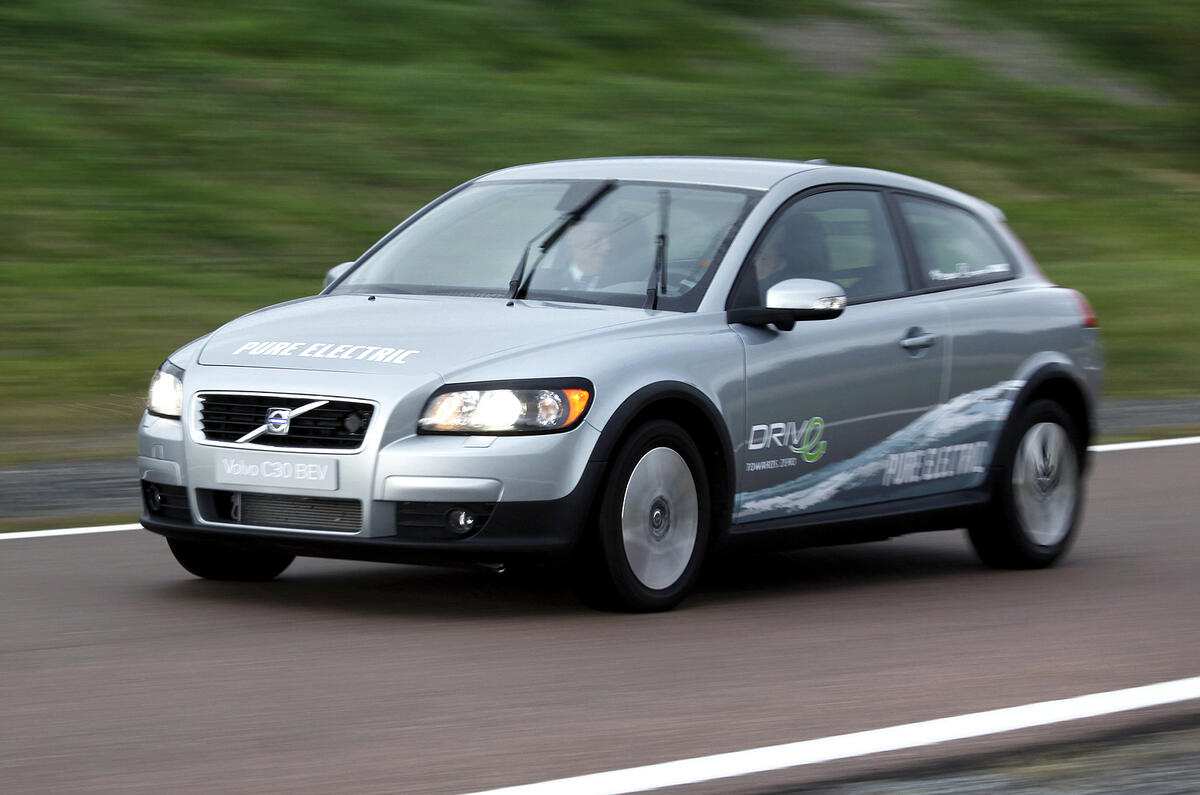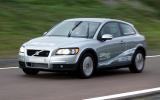What is it?
It’s an electric Volvo, which seems like a natural choice of propulsion given the company’s long-held concern for the environment, and indeed, it’s been working on experimental hybrids and electric vehicles, often in secret, for almost two decades.
This C30 is its latest pure electric prototype, developed with the Swedish government, from which it hopes to win another tranche of funding to finance a C30 fleet for real-world evaluation.
If that goes well, and it can find more investment money, an electric Volvo might see showrooms, although the company is offering no introduction date. So this battery-powered prototype is a lot further from reality than the electric cars of Mitsubishi, Nissan and Renault.
What’s it like?
Volvo chose the C30 because it’s the lightest model in its range, and the eco-oriented DRIVe version in particular because it’s more aerodynamic. The C30’s four-seat packaging makes it easier to package the two 150kg batteries into its central tunnel as well – and its overall weight rises by only 100kg over the standard car’s. It’s propelled by a 109bhp motor that’s good for 62mph in 10.5sec, a battery-preserving 81mph maximum and a 93mph potential range.
Apart from a socket in its grille this C30 looks standard, but inside the rev counter has been switched for a gauge that reveals the rate at which the battery is draining and how much regenerative braking is restoring it, while a smaller dial displays the power drawn to drive the air-conditioning and accessories.
To start you undergo the uncertain experience of twisting the ignition key and hearing nothing, the illumination of the odd light the only indication that the Volvo’s ready to go. And a flick of the gearlever into ‘D’ is all that’s needed to proceed.
The motor makes a distant, soothing whirr which on this prototype, turned to noticeable vibration under hard acceleration – merely a software issue, says Volvo product manager Henrik Jarlebratt – and little other sound. Like most electric cars, the Volvo gets going quite smartly on an instant bow-wave of torque to achieves decently brisk acceleration, if no more than that.
But for a commuting role, that’s fine. As is the restful ease with which it can be conducted, its silence at rest and its tidy handling, although the benefits of the improved weight distribution were not fully evident in this car, whose packaging differs from the finished item.
So it’s not hard to see the appeal of C30 in a low emission world, but the drawbacks, as with every electric car, are the high cost of its batteries and their limited range. Volvo isn’t quoting a retail price, but Jarlebratt reckons that it might cost much the same as a diesel C30, less the battery, which could be leased.
But because it will cost so little to run, he says, its whole life cost will be similar to or lower than for the diesel, especially if there are decent government subsidies to be had. The good news is that even since last December, the cost of batteries has fallen 30percent, and it will keep on falling. No doubt the C30’s potential range will improve too.
Should I buy one?
You can’t at the moment, and whether this will tempt Volvo into the EV market probably depends as much on these equations as it does on the headwinds that Renault and Nissan face in their quest to fast-track the acceptance of the electric car. Volvo is too small to take on this kind of risk, but appears well-positioned to be a speedy follower.

























Add your comment